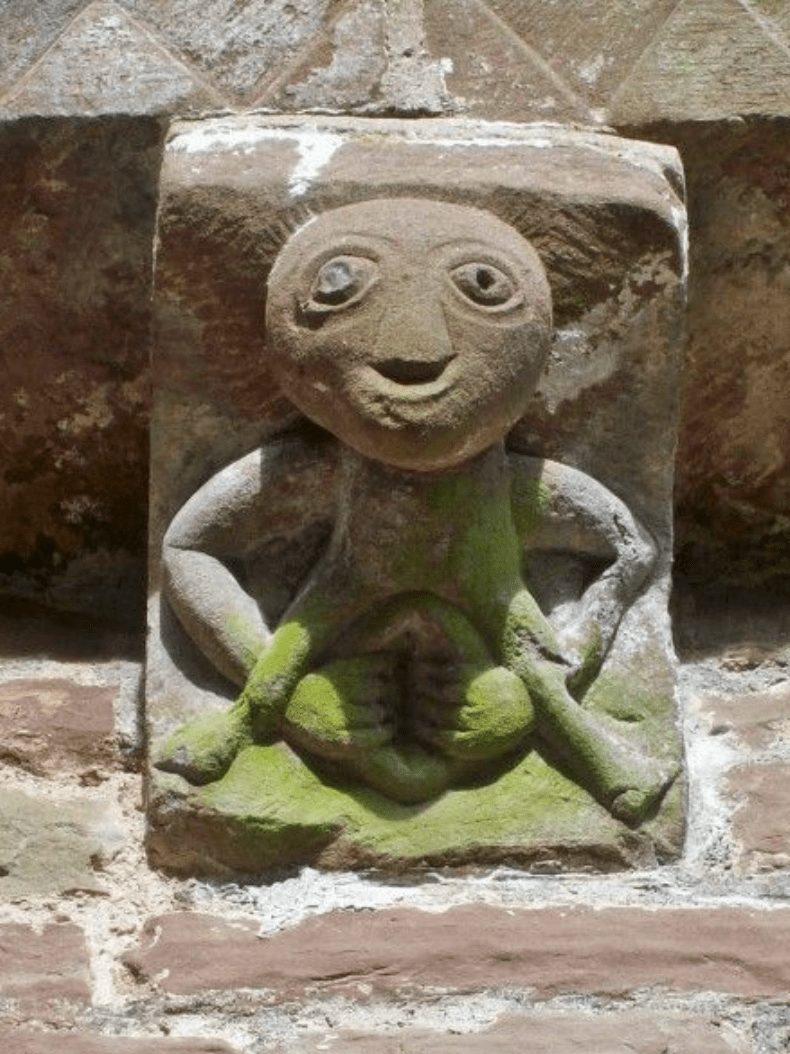A Brief History of Fertility Figures
- Kate Barnes

- Aug 22, 2023
- 4 min read
By Kate Barnes (MA Ceramics CSM)
Fertility figures are discoveries that have bewildered historians for centuries. The figures hold information of some of the world's oldest civilizations; they had been misunderstood and misinterpreted until the late 20th century.

Fertility figures have been found across the globe, the Venus of Willendorf is the oldest figure ever found estimated to have been made between 25,000 - 30,000 years ago in the Upper Paleolithic period.
Ancient Egypt
Egypt has been a predominant place for the discovery of fertility figures. Some of the figures bare wide hips and plump breasts and sexual organs are amplified. whilst other figures are slim with lopsided breasts and clothing covering the vagina. They were commonly made from wood, clay and stone, being decorated in vibrant blue and green which is now commonly known as Egyptian blue. The figures have been found in tombs which was first thought that they had been buried to company the dead in the after. They were mistaken to be concubines which intended to provide spirits of men with sexual pleasure.

The modesty of some figures is what led to the theory that they were symbols of female empowerment rather than their sexual objectification. More recent studies of these show that they would have been displayed within egyptian households, the egyptians believed they would enhance a wife's “fruitfulness” and a husband’s “potency” by calling upon the goddess of sexual love, Hathor. The figure is believed to bring a healthy fertility and pregnancy to all in the home. A healthy fertility was important to the Egyptians as childbirth could be risky and life threatening, death and disease was rampant throughout these times. The colour of the figures were also significant, the colour blue represented the blue lotus or blue lily. These flowers were important in their religion as it represented creation and re-birth. The Egyptians would also use them as a sexual aid due to its aphrodisiac properties, the blue lotus is now being used as an ingredient in modern day viagra.

Sheela na Gig
“Sheela na gig” is another representation of the female form in our past. They are stone carvings of women with exaggerated vulvas which have been found across europe. They have been thought to represent the pagan goddess of war and were displayed to scare off demons by showing their genitals. An earlier theory suggest they are grotesque carvings displayed above church and cathedral doors to warn against the sin of lust. In the Victorian period clergymen tried to destroy or hide these carvings due to their graphic imagery. People now see these as symbol of female empowerment and sexuality.Some farmers still present livestock to these carvings as they believe it would bring them a fertile spring. We are still unsure of a sheela na gig’s true origin but there's something entrancing and alluring about them that leads people to believe they hold a power of fertility.

Modern Day
Each culture has their own style of figurine but as to why we have found them on every continent, no one can be certain. Fertility figures are a mystery that may never be fully solved but what we do know is that they held great significance to our ancestors and gave them a purpose to keep on creating them. Artists and makers have now turned them into a symbol for modern day fertility issues and female empowerment. Many cultures still make figurines to display in homes but they are now for decorative purposes. Lorraine Clarke created a series of figures made from found objects from plant roots to plastic. Her work is to challenge our perspective on what is human, manufactured and organic.
Fertility figures and sex toys
Just like fertility figures sex toys have been used as a sign of female empowerment. The vibrator was created to cure “female hysteria”, if a woman had depression, anxiety or fatigue they would be prescribed a pelvic massage by their doctor. The vibrator was created to help with these massages. In 1952 the vibrator was no longer used for medical purposes, this is when it became a sign of female empowerment. In 1970’s Betty Dodson began to teach female masturbation class and sexual therapist Joani Blank opened the first female centred sex shop.
Fine bone’s “Prudence” is carrying on the significance of how sex toys can empower women. Using a toy to take our time and enjoy the pleasure we are experiencing, it is designed for female play and G-spot stimulation. Prudence is about exploring and empowering your own sexual pleasure.
Kaitlyn Barnes
Kaitlyn is a ceramicist and material researcher. She is currently studying MA Design at Central Saint Martins and has graduated from BA Ceramic Design at the same University. Her practice is a material investigation into Egyptian paste. Her work is driven by the complications of the material and uses a rigorous testing method to see how she can modify the paste to be more workable. A large body of research accompanies her work, looking into the historical and scientific value of Egyptian paste. Her work on her BA takes on a personal narrative that also corresponds to the material’s intended purpose. She looks forward to presenting her new body of work in 2024 at Central Saint Martins degree show.

Comments